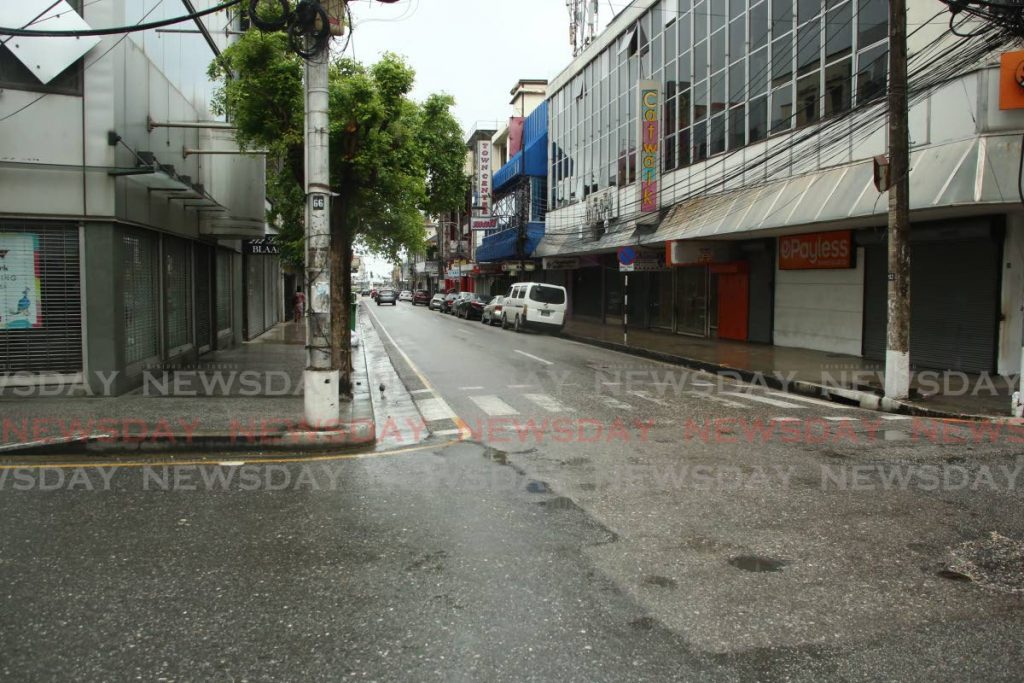Delicate balance between economy and lockdown

DR VISHAM BHIMULL
APRIL 2021 has been the most significant turning point for TT regarding the covid19 pandemic. A month after the Easter frolic, we have reached the highest recorded numbers of cases per day since the start of this pandemic in March of 2020.
A combination of complacency and lack of reinforcement of public education by the administration seems to be our folly in this third surge of covid19 cases. The end result was a bitter dose of stringent lockdown that is still not going down well in all sectors in TT.
Yet many have expressed that this decision taken by the Government is not the best when we take the economy into consideration. Many who were out of work have not received the relief grants owed to them since the last phase 1 lockdown a year ago, far less this time hoping for economic aid from the Government.
In the face of the economic aftermath of previous lockdowns, which our nation had to endure since the start of this dreaded pandemic, is a lockdown the best measure for dealing with a pandemic such as this? Do lockdowns really work to break the chain of transmission or are they just a band-aid solution?
A lockdown is classified as non-pharmaceutical interventions (NPIs) in a pandemic. Non-pharmaceutical as it is not the same as vaccines to prevent contracting the virus or drugs used to treat symptoms or complications after contracting the virus.
NPIs also include both actions that individuals and households can take (eg frequent hand-washing, covering coughs and sneezes, and keeping a distance from sick people) and physical distancing policies that communities enact (eg closing schools, working from home, restricting public gatherings) that are specifically geared to limiting the spread of a disease that is transmitted from person to person.
These measures were more stringently applied Thursday last week by shutting down non-essential services as we face this worst third surge of cases. It is the hope of the Government and the health authorities that these measures will see a much-needed drop in daily new cases diagnosed. This may be essential if we are not to end up in a grave situation like India. There the cases are so high that the healthcare capacity has been seriously overwhelmed, adding significantly to the death toll that is now out of control.
A lockdown is not necessary if a population is pandemic ready and follows masking and physical distancing requirements. However, if a population is unprepared and not compliant with less stringent NPIs a lockdown will be necessary. We have seen these break the chain of infection in our first and second surges of our pandemic experience here in TT. However, a lockdown has its economic consequences as we have seen during our past surges. So it makes sense that a complete lockdown is not sustainable.
Because this is a relatively new situation and we are dealing with a novel virus, the effectiveness of the different NPIs reducing transmission is poorly understood. A lockdown employs the NPIs of limiting gathering sizes and closing businesses or educational institutions to stay-at-home orders. In a recent study by the American Association for the Advancement of Science, these NPI elements of lockdown were assessed. It found the following:
* Closing both schools and universities was consistently highly effective at reducing transmission at the advent of the pandemic.
* Banning gatherings was effective, with a large effect size for limiting gatherings to ten people or less, a moderate-to-large effect for 100 people or less, and a small-to-moderate effect for 1,000 people or less.
* Targeted closures of face-to-face businesses with a high risk of infection, such as restaurants, bars and nightclubs, had a small-to-moderate effect.
* Closing most nonessential businesses delivering personal services was only somewhat more effective (moderate effect).
* When these interventions were already in place, issuing a stay-at-home order had only a small additional effect.
These results indicate that, by using effective interventions, some countries could control the epidemic while avoiding stay-at-home orders. This means that a stringent lockdown like what we are experiencing now may not be necessary. Ramping up testing and strict isolation of people who have tested positive or their contacts, banning all congregations and physical distancing are what really are required. If we weigh the cost of implementing these to a possible economic crisis due to stringent lockdowns, it is quite clear what is needed to be done.
As for stimulating the economy in this environment of limited economic opportunities due to the pandemic, it is quite a daunting predicament. With the unpredictability of surges there is no clear forecast. A steady flow of money, goods, services and the people that make them flow is essential to a healthy economy. This flow is severed due to the current lockdown. Innovation is key.
On the medical side, vaccines, treatment and capacity innovations are needed to save lives and end the economic damage. On the economic side policy innovations are needed. These include discount windows, zero interest loans and a moratorium on mortgage payments. These could help make a real difference. Speedy and well executed medical and policy innovations are our best hope to save the most lives and avoid permanent economic damage.
Dr Visham Bhimull is a primary care physician


Comments
"Delicate balance between economy and lockdown"